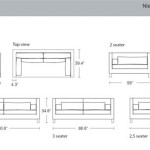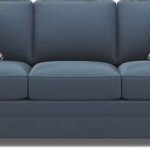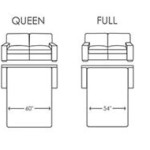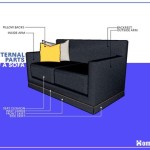Finding Comfortable and Affordable Seating: Sofas For Less Than $300
The search for affordable furniture often leads to a compromise between price and quality. Finding a sofa that offers both comfort and durability while remaining within a strict budget, such as under $300, can be challenging. However, with careful research and a strategic approach, it is possible to furnish a living space with a comfortable and functional sofa without exceeding financial limitations. This article will explore various factors to consider when seeking sofas under $300, focusing on material options, design considerations, and potential retail sources.
Budget constraints should not automatically equate to sacrificing comfort or longevity. Careful consideration of available options allows for a judicious selection that meets both practical and aesthetic needs. This involves understanding the trade-offs associated with lower price points and prioritizing features that are most important to the buyer. The goal is to acquire a sofa that serves its intended purpose effectively and provides a comfortable seating experience for daily use.
Understanding Material Trade-offs
The price of a sofa is significantly influenced by the materials used in its construction. Sofas priced under $300 will typically utilize less expensive materials compared to higher-end models. Understanding the characteristics of these materials is crucial in making an informed decision. Fabrics like polyester and microfiber are commonly found in budget-friendly sofas. These synthetic materials are often more resistant to stains and wear than natural fibers like cotton or linen, making them practical choices for households with children or pets. However, they may not possess the same luxurious feel as higher-quality fabrics.
The frame construction is another critical factor. Solid wood frames are generally more durable and long-lasting, but they also contribute to a higher price point. Sofas under $300 are more likely to feature frames made of engineered wood, such as plywood or particleboard. While these materials are less robust than solid wood, they can still provide adequate support if properly constructed. It is important to inspect the frame carefully for any signs of weakness or instability before making a purchase. The joinery method used in the frame construction is also noteworthy; look for reinforced corners and secure connections to ensure structural integrity.
Cushion filling significantly impacts the comfort of a sofa. Foam is a common filling material used in budget-friendly options. The density of the foam determines its firmness and longevity. Lower-density foam may flatten or lose its shape more quickly, while higher-density foam provides better support and retains its form for a longer period. Some sofas may incorporate a combination of foam and fiberfill to achieve a balance between comfort and affordability. Innerspring cushions, while typically found in more expensive sofas, may occasionally be available in budget options, offering a more traditional seating experience.
The legs of the sofa are an often-overlooked aspect of its construction. Plastic or metal legs are common in sofas under $300. While these materials may not be as aesthetically pleasing as wood legs, they can provide adequate support. It is important to ensure that the legs are securely attached to the frame and can bear the weight of the sofa and its occupants. Consider the flooring material and choose legs that will not scratch or damage the surface. Using furniture pads can help protect floors and prevent the sofa from sliding.
Design Considerations: Style and Functionality
While affordability is a primary concern, the design of the sofa should also align with the overall aesthetic of the living space. Sofas under $300 are typically available in a limited range of styles, often featuring simple and contemporary designs. Choosing a neutral color, such as gray, beige, or navy, can provide versatility and allow the sofa to blend seamlessly with existing decor. These colors are also less likely to show stains and wear, making them practical choices for high-traffic areas.
The size of the sofa is another important consideration. Measure the available space carefully before making a purchase to ensure that the sofa will fit comfortably. Consider the layout of the room and the intended use of the sofa. A loveseat or a smaller sofa may be more suitable for apartments or smaller living rooms, while a larger sofa may be appropriate for larger spaces. Pay attention to the dimensions of the sofa, including its width, depth, and height, to avoid any surprises upon delivery.
Functionality is also a key factor to consider. Think about how the sofa will be used. If it will primarily be used for seating, comfort and support are paramount. If it will also be used for sleeping, consider a sofa with a sleeper function, although these may be more difficult to find within the $300 price range. Some sofas may offer additional features, such as built-in storage or reclining capabilities. Evaluate the importance of these features and determine whether they justify any potential trade-offs in other areas, such as material quality or design aesthetics.
Consider the overall design consistency with the existing furniture in the room. While matching furniture sets are not always necessary, ensuring a cohesive style can create a more visually appealing space. Look for sofas that complement the existing color scheme and furniture styles. Consider adding throw pillows and blankets to personalize the sofa and tie it into the overall decor. These accessories can also enhance the comfort and style of a budget-friendly sofa.
Assembly requirements should also be taken into account. Some sofas may require assembly upon delivery, while others may be delivered fully assembled. Consider the ease of assembly and whether any special tools or skills are required. If assembly is required, ensure that all necessary hardware and instructions are included. If you are not comfortable assembling the sofa yourself, consider hiring a professional assembly service.
Exploring Retail Sources and Finding Deals
Several retail sources offer sofas under $300, including online retailers, discount furniture stores, and thrift stores. Online retailers often offer a wider selection and competitive prices, but it is important to carefully review the product specifications and customer reviews before making a purchase. Discount furniture stores may offer closeout deals or overstock items at reduced prices. Thrift stores and consignment shops can be a good source for used sofas in good condition, but it is important to inspect the sofa carefully for any signs of wear or damage.
When shopping online, pay close attention to the shipping costs and return policies. Some retailers may offer free shipping, while others may charge a significant fee. Ensure that the return policy allows for returns or exchanges if the sofa does not meet expectations. Read customer reviews carefully to get an understanding of the quality of the sofa and the customer service provided by the retailer. Look for reviews that mention the comfort, durability, and ease of assembly of the sofa.
Consider purchasing a sofa during a sale or promotion. Many retailers offer discounts on furniture during holidays or seasonal sales. Sign up for email newsletters to receive notifications about upcoming sales and promotions. Follow retailers on social media to stay informed about special offers and deals. Be prepared to act quickly when you find a sofa that meets your needs and budget, as popular items may sell out quickly.
Explore alternative options such as futons or daybeds. These alternatives can often provide seating and sleeping options at a lower price point than traditional sofas. Futons are typically convertible sofas that can be folded down into a bed, while daybeds are similar to twin beds with a backrest and armrests. These options may be suitable for guest rooms or smaller living spaces.
Another option is to consider purchasing a used sofa from online marketplaces or local classifieds. Many people sell used furniture in good condition at discounted prices. Be sure to inspect the sofa carefully before making a purchase and negotiate the price if necessary. Consider hiring a professional cleaning service to sanitize the sofa before bringing it into your home.
In conclusion, finding a sofa for less than $300 requires careful planning and research. Understanding the trade-offs associated with lower price points, considering design and functionality, and exploring various retail sources can help you find a comfortable and affordable sofa that meets your needs and budget. By prioritizing features that are most important to you and being willing to compromise in other areas, you can furnish your living space with a functional and stylish sofa without breaking the bank.

13 Best Sofas Under 300 That Don T Look

Best Couches Under 300 2024 Sofas

Best Couches Under 300 2024 Sofas

12 Best Couches Under 300 In 2024 Our Top Picks

14 Best Couches Under 300 Per Reviews And Interior Designers

12 Best Couches Under 300 In 2024 Our Top Picks

Corner Sofas Under 300 We Ve Got Them Abakus

The Best Rated Love Seats And Sofas Under 300 Arts Classy

2 Seater Sofas Under 300 Our 6 Stunners Abakus

2 Seater Sofas Under 300 Our 6 Stunners Abakus








